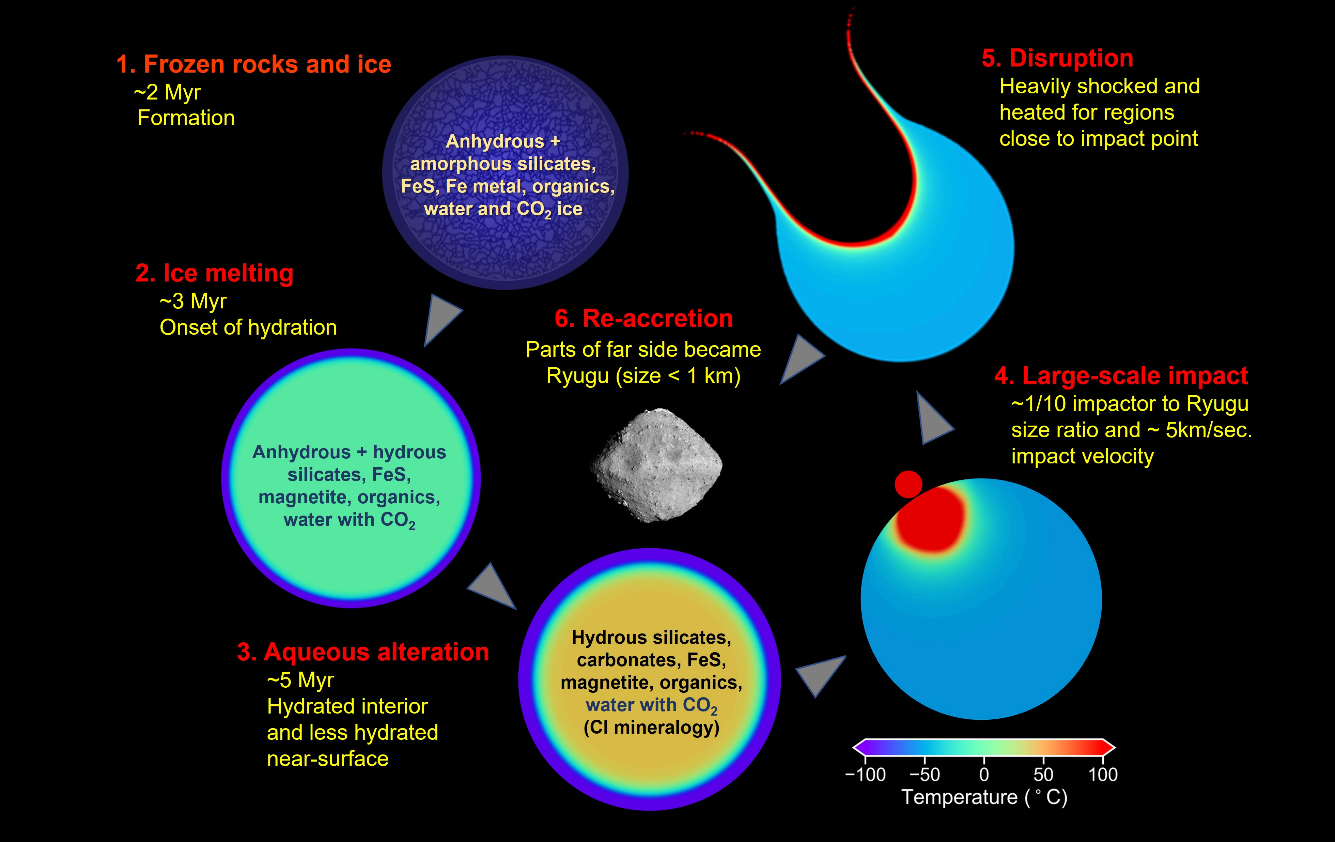
Japan Aerospace Exploration Agency
Tohoku University
High Energy Accelerator Research Organization
J-PARC Center
Japan Synchrotron Radiation Research Institute
Hokkaido University
Kyoto University
Kyushu University
Hiroshima University
The University of Tokyo
The Japan Aerospace Exploration Agency (JAXA) has just completed the first year of the analytical study of samples returned from asteroid Ryugu. These cutting-edge explorations have been undertaken by the six sub-teams of the Initial Analysis Team and two Phase-2 curation teams.
We are pleased to announce that a paper summarizing the research results of the “Stone Analysis Team” from the Hayabusa2 Initial Analysis Team has been published in the US scientific journal “Science” on September 23, 2022.
Title: Formation and evolution of carbonaceous asteroid Ryugu: Direct evidence from return samples
Journal: Science
DOI: 10.1126/science.abn8671
Initial Analysis of the Asteroid Ryugu Samples
The samples from asteroid Ryugu that were returned to Earth by the Asteroid Explorer Hayabusa2 on December 6, 2020, initially underwent a cataloging description (Phase-1 curation) at the facility established at JAXA’s Institute of Space and Astronautical Science. Part of the returned sample was distributed to the “Hayabusa2 Initial Analysis Team”, consisting of six sub-teams and two Phase-2 curation institutes. The initial analysis team is designed to reveal the multifaceted features of the sample through a plan of high-precision analysis, with specialized sub-teams assigned to tackle the science objectives of the Hayabusa2 mission. Meanwhile, the Phase-2 curation institutes have specific specialties that are utilized to catalog the samples based on a comprehensive analysis flow and clarify the potential impact of the sample through measurement and analysis appropriate to the characteristics of the returned particles.
Please refer to the press release for details.
Related Sites
HAYABUSA2-IMSS Analysis of asteroid Ryugu
